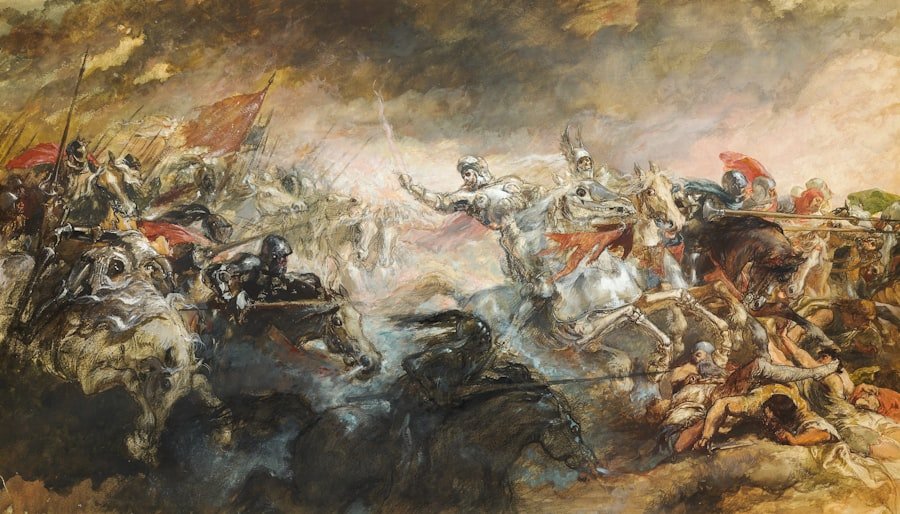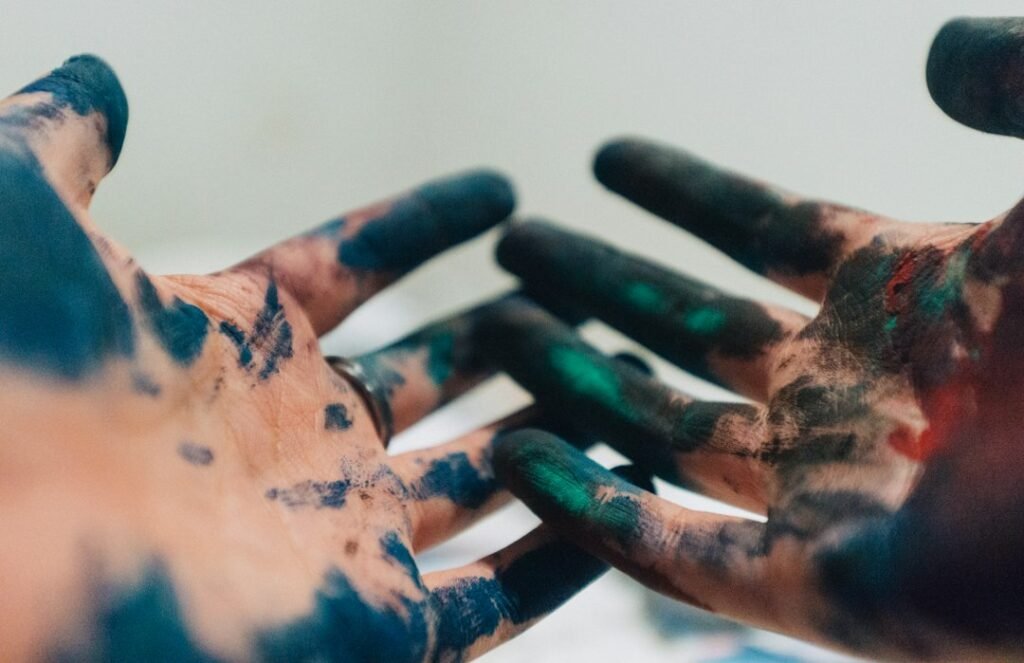Chinese art and culture have a rich and vibrant history that spans thousands of years. From calligraphy and painting to architecture and philosophy, Chinese art and culture have had a profound impact on the world. Understanding Chinese art and culture is not only important for appreciating the beauty and significance of these artistic expressions, but also for fostering cross-cultural understanding in today’s globalized world.
China, with its vast territory and diverse ethnic groups, has a long and complex history that has shaped its art and culture. Chinese art is known for its attention to detail, intricate designs, and use of symbolism. Chinese culture is deeply rooted in Confucianism, Taoism, and Buddhism, which have influenced various aspects of Chinese life including art, philosophy, and social customs.
In today’s globalized world, where cultures are increasingly interconnected, it is important to have an understanding of different cultures in order to foster mutual respect and appreciation. By learning about Chinese art and culture, we can gain insights into the values, beliefs, and traditions of the Chinese people. This knowledge can help us navigate cultural differences, build bridges between communities, and promote cultural exchange.
Table of Contents
ToggleThe Importance of Vocabulary in Understanding Chinese Art and Culture
Language plays a crucial role in shaping our understanding of culture. It is through language that we are able to communicate ideas, express emotions, and convey meaning. In the context of Chinese art and culture, learning the vocabulary associated with these artistic expressions is essential for fully appreciating their significance.
Chinese vocabulary related to art and culture encompasses a wide range of terms that are unique to the Chinese language. For example, there are specific words for different types of brushstrokes in calligraphy, different colors in painting, and different styles in architecture. Without a basic understanding of these terms, it can be difficult to fully grasp the nuances and intricacies of Chinese art.
By learning Chinese vocabulary, we can gain a deeper understanding of the cultural context in which these artistic expressions were created. We can appreciate the symbolism behind certain colors, understand the techniques used in calligraphy and painting, and recognize the significance of certain symbols and motifs. This knowledge allows us to engage with Chinese art and culture on a deeper level and develop a more nuanced understanding of its meaning and significance.
Chinese Calligraphy: The Art of Writing
Chinese calligraphy is considered one of the highest forms of visual art in Chinese culture. It has a long history that dates back thousands of years and has evolved over time. Calligraphy is not just a form of writing, but also a form of artistic expression that embodies the beauty and elegance of the Chinese language.
Calligraphy holds a special place in Chinese culture as it is seen as a reflection of one’s character and personality. It is believed that the way a person writes reveals their inner self. Calligraphy is also closely associated with Confucianism, as it was considered an essential skill for scholars and officials during ancient times.
There are various techniques and styles of Chinese calligraphy, each with its own unique characteristics. The most well-known styles include seal script, clerical script, regular script, running script, and cursive script. Each style has its own set of rules and conventions, but all share a common emphasis on balance, rhythm, and harmony.
The Symbolism of Colors in Chinese Art
Colors play a significant role in Chinese art and culture. In Chinese culture, each color has its own symbolic meaning and is associated with different elements such as nature, emotions, and social status. Understanding the symbolism of colors is essential for interpreting Chinese art and appreciating its deeper meaning.
Red is the most auspicious color in Chinese culture and is associated with good luck, happiness, and celebration. It is often used in festive occasions such as weddings and New Year celebrations. Yellow is the color of the emperor and is associated with power and royalty. It is often used in imperial palaces and temples.
Blue and green are associated with nature and represent tranquility, harmony, and growth. They are often used in landscape paintings to depict mountains, rivers, and forests. Black is associated with mystery and depth, while white represents purity and innocence. These colors are often used in ink paintings to create contrast and convey different moods and emotions.
The Significance of Dragons in Chinese Culture
Dragons hold a special place in Chinese culture and mythology. They are seen as powerful and benevolent creatures that bring good luck, prosperity, and protection. Dragons are often depicted in Chinese art as majestic creatures with long bodies, sharp claws, and fiery breath.
In Chinese mythology, dragons are associated with the elements of water and air. They are believed to control the weather, bring rain for a good harvest, and protect against evil spirits. Dragons are also closely associated with the emperor and symbolize imperial power and authority.
In Chinese art, dragons are often depicted in various forms such as dragon robes, dragon boats, and dragon dances. Dragon robes were worn by emperors during important ceremonies and symbolized their divine status. Dragon boats are used during dragon boat festivals to commemorate the death of a famous poet and statesman.
Traditional Chinese Painting Techniques

Traditional Chinese painting is known for its unique techniques and use of brushwork and ink. It is a highly expressive art form that captures the essence of the subject matter rather than focusing on realistic representation. Traditional Chinese painting often depicts landscapes, flowers, birds, and animals.
The brushwork in Chinese painting is characterized by its fluidity, spontaneity, and rhythm. The brush is held upright and the strokes are made with quick, confident movements. The ink is applied in varying shades to create depth and texture. The use of negative space is also an important aspect of Chinese painting, as it allows the viewer’s imagination to fill in the gaps.
Famous Chinese paintings such as “Along the River During the Qingming Festival” and “Dwelling in the Fuchun Mountains” are examples of traditional Chinese painting techniques. These paintings are highly detailed and capture the beauty and harmony of nature. They are often admired for their meticulous brushwork, delicate colors, and poetic atmosphere.
The Role of Tea in Chinese Culture
Tea has a long and rich history in Chinese culture. It is not just a beverage, but also a symbol of hospitality, friendship, and social harmony. Tea is deeply ingrained in Chinese daily life and is an integral part of social gatherings, business meetings, and family celebrations.
The history of tea in China dates back thousands of years. Legend has it that tea was discovered by Emperor Shen Nong, who was known for his interest in herbal medicine. Tea was initially used for its medicinal properties before it became a popular beverage.
There are various types of Chinese tea, each with its own unique characteristics and flavors. Some of the most well-known types include green tea, black tea, oolong tea, and pu-erh tea. Green tea is known for its fresh and grassy flavor, while black tea has a stronger and more robust taste. Oolong tea is semi-fermented and has a rich and complex flavor profile. Pu-erh tea is aged and fermented, resulting in a deep and earthy flavor.
Tea ceremonies are an important part of Chinese culture and are often performed to show respect and gratitude. During a tea ceremony, the host prepares the tea with precision and care, using specific utensils and following certain rituals. The tea is then served to guests who appreciate its aroma, taste, and presentation.
The Meaning of Yin and Yang in Chinese Philosophy
Yin and Yang are fundamental concepts in Chinese philosophy and are often depicted in Chinese art. Yin represents the feminine, passive, and dark aspects of the universe, while Yang represents the masculine, active, and light aspects. The concept of Yin and Yang is based on the idea that everything in the universe is interconnected and constantly changing.
In Chinese art, Yin and Yang are often represented through contrasting elements such as light and dark, soft and hard, and empty and full. These opposing forces are believed to create balance and harmony in the world. Yin and Yang can be seen in various aspects of Chinese art and culture, including calligraphy, painting, architecture, and even food.
For example, in calligraphy, the contrast between thick and thin brushstrokes represents the balance between Yin and Yang. In painting, the use of light and dark colors creates a sense of harmony. In architecture, the balance between open spaces and solid structures creates a harmonious environment.
Chinese Festivals and Their Significance
Chinese festivals play an important role in Chinese culture as they provide an opportunity for people to come together, celebrate traditions, and honor ancestors. There are numerous festivals throughout the year that are celebrated with great enthusiasm and joy.
Some of the major Chinese festivals include the Spring Festival (Chinese New Year), Lantern Festival, Dragon Boat Festival, Mid-Autumn Festival, and Double Ninth Festival. Each festival has its own unique customs, rituals, and traditions.
During the Spring Festival, families gather for reunion dinners, exchange gifts, and set off fireworks to ward off evil spirits. The Lantern Festival marks the end of the Spring Festival celebrations and is celebrated with lantern displays, lion dances, and riddle-solving activities.
The Dragon Boat Festival is held on the fifth day of the fifth lunar month to commemorate the death of Qu Yuan, a famous poet and statesman. Dragon boat races are held to honor his memory and to pray for a good harvest and protection against evil spirits.
The Mid-Autumn Festival is a time for families to come together and celebrate the harvest. Mooncakes, a traditional pastry filled with sweet or savory fillings, are eaten during this festival. Lanterns are also lit to symbolize the reunion of family and friends.
The Double Ninth Festival is celebrated on the ninth day of the ninth lunar month and is a time to pay respects to ancestors and enjoy the autumn scenery. People often climb mountains, fly kites, and drink chrysanthemum wine during this festival.
The Legacy of Chinese Architecture and Design
Chinese architecture and design have had a profound influence on the world. From ancient palaces and temples to modern skyscrapers, Chinese architecture is known for its grandeur, elegance, and attention to detail.
Traditional Chinese architecture is characterized by its use of wood, stone, and brick materials, as well as its emphasis on symmetry and harmony. The most well-known examples of Chinese architecture include the Forbidden City in Beijing, the Great Wall of China, and the Temple of Heaven.
Chinese design principles such as Feng Shui have also had a significant impact on modern architecture and design. Feng Shui is the practice of arranging objects and spaces in a way that promotes positive energy flow and harmony. Many architects and designers incorporate Feng Shui principles into their work to create spaces that are not only aesthetically pleasing but also promote well-being.
In conclusion, understanding Chinese art and culture is crucial in today’s globalized world. By learning about Chinese calligraphy, the symbolism of colors, the significance of dragons, traditional painting techniques, the role of tea, Yin and Yang philosophy, festivals, and architecture, we can gain a deeper appreciation for Chinese culture and its impact on the world. This knowledge allows us to foster cross-cultural understanding, build bridges between communities, and promote cultural exchange.
If you’re interested in learning more about Chinese culture and want to expand your vocabulary, check out this related article on “Chinese Festivals: Key Phrases for Celebrating Traditional Holidays.” This article provides essential vocabulary terms and phrases that will help you navigate and participate in traditional Chinese festivals. From greetings to expressions of well-wishes, this article is a great resource for anyone looking to immerse themselves in Chinese culture. Read more







